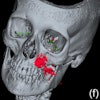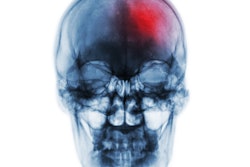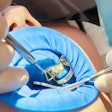
A notable link was found between invasive dental procedures, especially extractions and surgeries, and subsequent infective endocarditis in high-risk patients, according to a large U.S. study published on August 17 in the Journal of the American College of Cardiology.
Additionally, there is a noteworthy correlation between antibiotic prophylaxis (AP) and a reduced risk of infective endocarditis (IE) following invasive dental procedures (IDPs). The landmark study included nearly 8 million people.
"These data support recommendations that patients at high risk for IE receive AP before IDPs," wrote the authors, led by Dr. Peter Lockhart of the Carolinas Medical Center-Atrium Health in Charlotte, NC.
The findings support guidelines from the American Heart Association (AHA) and the European Society of Cardiology (ESC), which recommend the use of prophylactic antibiotics for high-risk patients.
However, the current study comes in direct opposition to a study published in JAMA Network Open in January that showed no significant relationship between invasive dental procedures and subsequent prosthetic joint infections, which are rare but serious complications of endocarditis. That study included nearly 8,500 patients admitted to hospitals in England.
Analyzing infection risk
To investigate the potential association between invasive dental procedures and infective endocarditis and the effectiveness of prophylaxis antibiotics in reducing the occurrence of infection, the authors performed a case-crossover analysis and cohort study that included nearly 8 million patients in the U.S. The data were extracted from the Commercial/Medicare Supplemental prescription and dental databases as well as the IBM MarketScan databases.
Of those patients included in the study, 3,774 (475 cases per million) were hospitalized with infective endocarditis. Of those hospitalized, 1,292 (34%) were at high infective endocarditis risk, 831 (22%) were at moderate risk, and 1,651 (nearly 44%) were at low or unknown risk for the heart infection.
Furthermore, the overall adjusted infective endocarditis incidence within 30 days of a dental procedure was 468 per million procedures in patients at high risk. It was 24 per 1 million procedures in those at moderate risk, and four per 1 million procedures in those at low or unknown risk.
A subanalysis of procedures showed that the odds of infective endocarditis were dramatically higher following extractions (odds ratio [OR]: 9.22; 95% confidence interval [CI]: 5.54-15.88; p = < 0.0001) and other oral surgical procedures (OR: 20.18; 95% CI: 11.22-36.74; p = < 0.0001), according to the study.
Preventive antibiotics were prescribed to cover 33%, 10%, and 3% of invasive dental procedures in those at high, moderate, and low/unknown infective endocarditis risk, respectively. In high-risk patients, prophylactic antibiotics given for invasive dental procedures were linked with a significant reduction in infective endocarditis risk (OR: 0.38; 95% CI: 0.22-0.62; p = 0.002). This was in comparison to those who were not prescribed antibiotic prophylaxis, the authors wrote.
Notably, this reduction was most prominent following extractions (OR: 0.13; 95% CI: 0.03-0.34; p < 0.0001) and other oral surgical procedures (OR: 0.09; 95% CI: 0.01-0.35; p = 0.002). But preventive antibiotics offered no remarkable benefit following other invasive dental procedures or in patients at moderate, low, or unknown risk of developing infective endocarditis, they wrote.
The study had several limitations, including the use of the MarketScan databases. Though the dataset encompasses a large sample of U.S. employer-provided health insurance enrollees, the study only included those with medical, dental, and prescription benefits. Therefore, it is unlikely to be representative of the entire population in the U.S., the authors wrote.
A matter of contention
For multiple reasons, including antibiotic resistance, prescribing antibiotics before invasive dental procedures to prevent infective endocarditis has been a major talking point in dentistry.
To explain the 30% to 40% of infective endocarditis cases caused by oral streptococci, a causal link with invasive dental procedures has been postulated. To prevent this condition, the AHA and other professional organizations have issued guidelines on antibiotic prophylaxis to prevent infective endocarditis in patients undergoing invasive dental procedures for decades.
Despite this practice becoming the standard of care for the prevention of infective endocarditis in many countries, a clinical trial of antibiotic prophylaxis effectiveness in decreasing infective endocarditis risk has never been conducted. Also, clinicians continue to question if regular daily activities such as toothbrushing are more likely than invasive dental procedures to cause IE.
Since the study showed a correlation between invasive dental procedures and infective endocarditis, more research is necessary to explore the risk of oral bacterial infective endocarditis posed by routine daily activities, including toothbrushing and chewing, specifically in those with poor oral hygiene, the authors wrote.
"(Nevertheless,) these data support the American Heart Association, and other, recommendations that those at high IE risk should receive AP before IDP," Lockhart et al wrote.
Disclosure: A research grant from the Delta Dental of Michigan Research Committee and Renaissance Health Service Corporation funded the study. However, the funding source had no role in the design and conduct of the study.
Authors Lockhart, Martin Thornhill, PhD, and Dr. Patrick O'Gara received support from the Delta Dental Research and Data Institute for this work. Additionally, Lockhart is a member of the writing committee reviewing the current AHA guidelines on antibiotic prophylaxis to prevent infective endocarditis. Lockhart and Dr. Larry Baddour were members of the AHA Committee on Rheumatic Fever, Endocarditis, and Kawasaki Disease and were involved in producing the 2007 and 2021 AHA guidelines on the prevention of infective endocarditis. Baddour received consulting fees from Boston Scientific, Botanix Pharmaceuticals, and Roivant Sciences. O'Gara has received support in the last three years from Medtronic, Edwards Scientific, and the National Heart, Lung, and Blood Institute that was unconnected to this study.
Though unconnected to this study, Mark Dayer, PhD, received support during the last three years from Biotronik. Bernard Prendergast has received unrestricted research and educational grants and lecture fees from Edwards Lifesciences, lecture fees from Abbott and Anteris, and consultancy fees from and serves on the scientific advisory board for Anteris and Microport. Prendergast also was a member of the ESC's Task Force on the Prevention, Diagnosis, and Treatment of Infective Endocarditis, which produced its infective endocarditis guidelines.



















